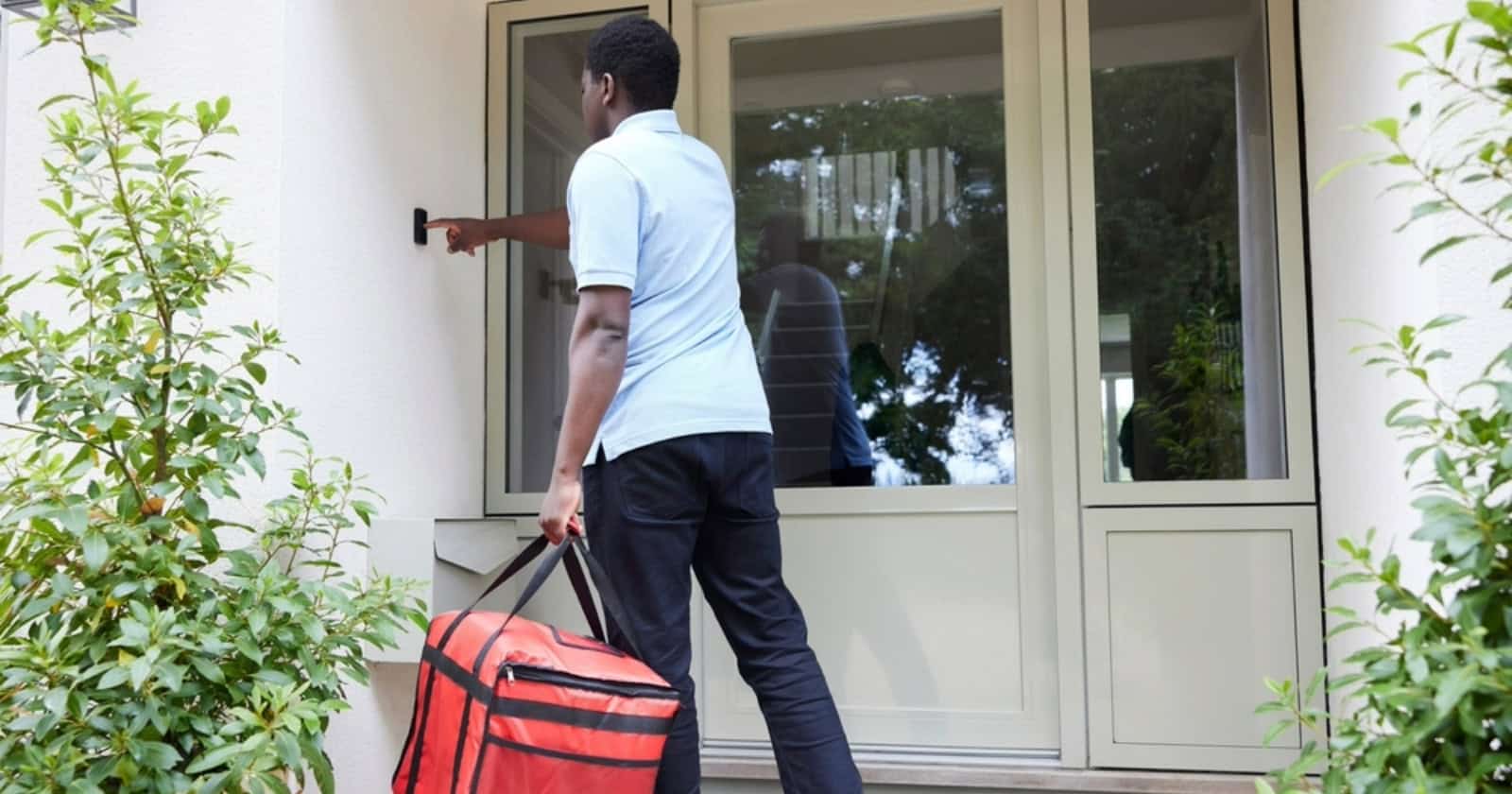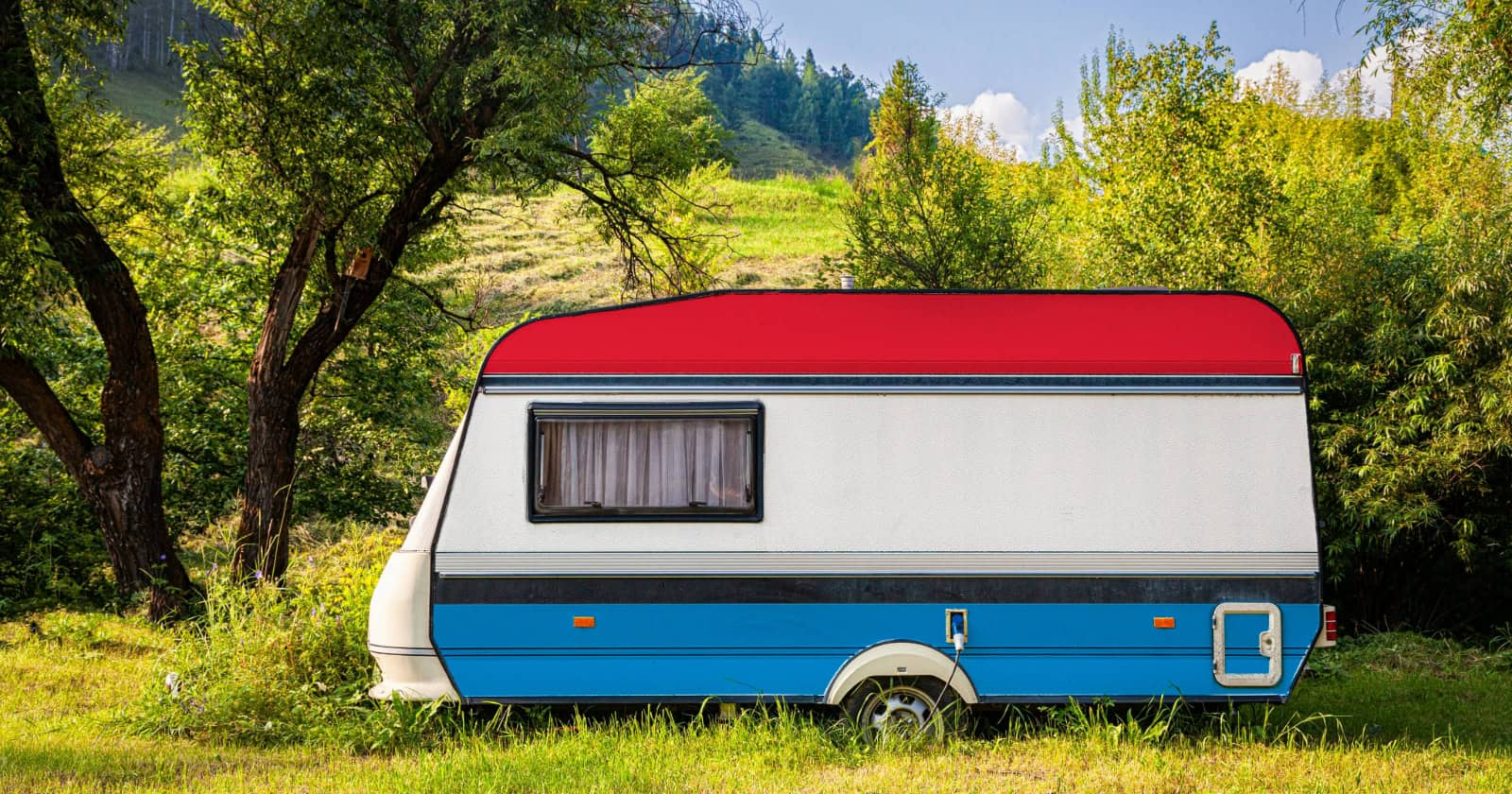Joe A. Chavez is an artist and musician from Maine.
With a Ford Ranger pickup, a little cash to spend, and the ability to scrounge up material on the cheap, he made something awesome.
Combining these three elements – and about $500 and a month of his time – Joe built his own housetruck on the back of his Ford Ranger.
$500 DIY Ford Ranger Truck Camper
Unlike truck campers that work with the existing bed to attach to the truck, Joe’s custom RV has the house integrated into the truck’s chassis.
He tried to use as much reclaimed and recycled material as possible. Outside siding and roofing materials are new, but most everything else was found for free.
Joe’s housetruck from the side view with the roof down.
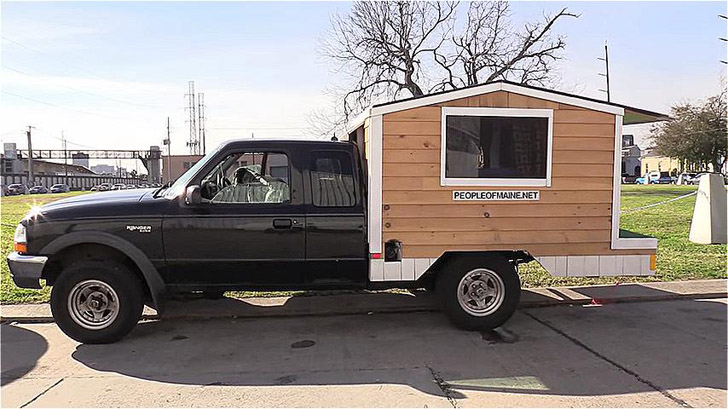
The Ranger tiny house is built with traditional framing methods, using a 2×4 lumber frame with insulation sandwiched between exterior plywood and interior wall paneling.
To keep the roofline low for traveling, Joe opted to build it very short. Since this does not allow much living space, he made the roof open up to give him full overhead height at the rear of the camper. We’ve seen a similar “pop out roof” on other DIY builds.
View with the roof lifted, note the house wrap covering.
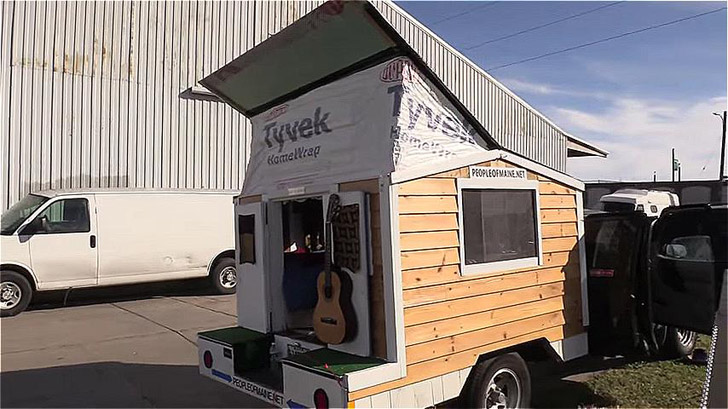
The roof transformation follows a well-worn principle, keep things simple!
It’s hinged in the center and has two poles that hold it up in its extended position. The exterior portion of this is a bit unfinished, since it’s simply wrapped in Tyvek house wrap, which would not be very weatherproof.
With the roof in the upright position, the roofline becomes a shed style, with drainage running toward the truck’s cab.
Interior view of Joe’s housetruck, basic but with plenty of room for customizing.
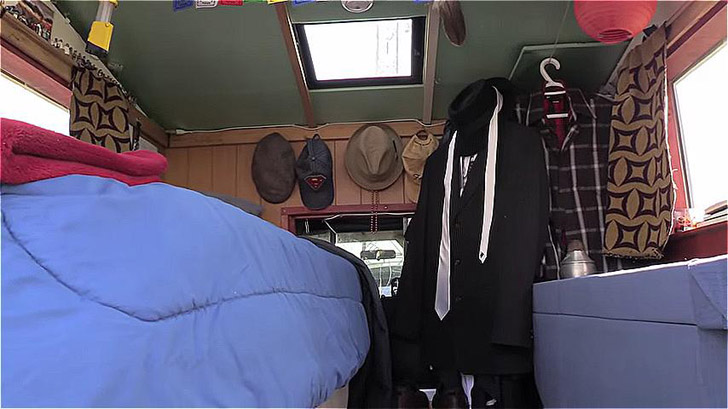
There are two large windows, one on each side of the camper. The rear entrance is through a set of short double doors that require Joe to enter almost crawling, until the roof is lifted up from the inside.
His main concerns when designing the RV were that it look like a home and provide comfort for him and his pets.
Joe with his housetruck, featuring the main entrance and “back yard”.
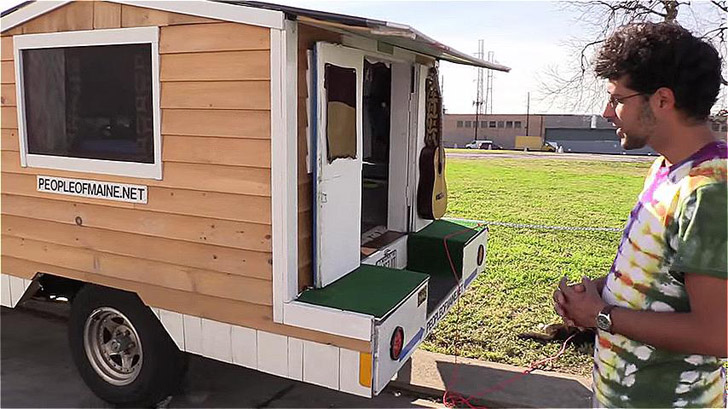
His camper is built small enough to not extend the footprint of the Ford beyond what a normal parking space will contain. It is also short enough to be able to access parking garages, with the roof in the folded down position.
In addition to his desire for a homey space, Joe chose the Ranger primarily for economic reasons. Since he already had it, there was no need for additional expenditure and the Ranger is known for its fuel efficiency, something that most RVs and even full sized conversion vans are not.
Joe jokingly refers to his large platform rear bumper – covered in astroturf – as his backyard.
Additional light comes from a skylight on the cab side face of the roof, as well as Christmas lights strung up throughout for night time illumination.
There’s not much to this tiny space, with a full sized bed on one side and a bench running the length of the camper box on the other.
He travels with his dog Luke and cat Suzey and manages to store everything they need in storage under the bed and bench and in his corner hanging closet.
Besides creating art and music Joe runs a couple of websites, People of Maine and Uncle Traveling Joe, “a blog about traveling across the USA in a tiny house with a cat and dog, having daily adventures, and living a minimal and free life.” Be sure to check them out!


